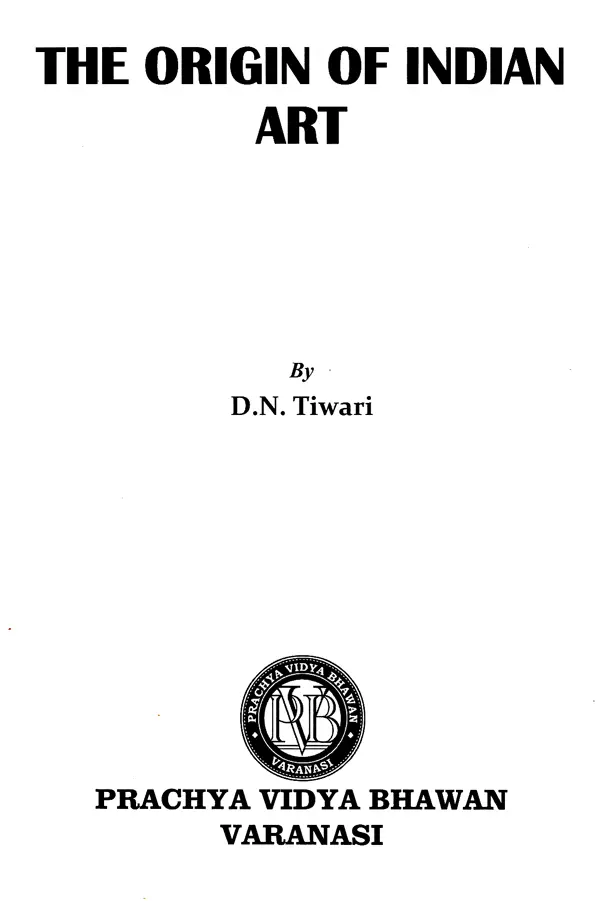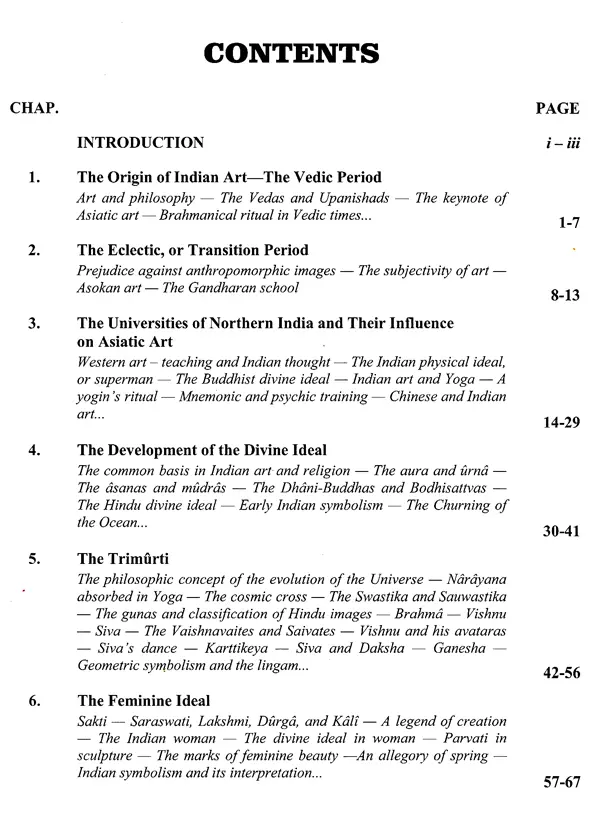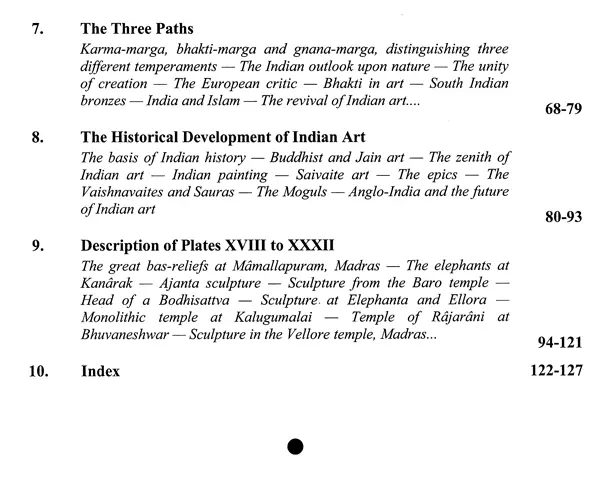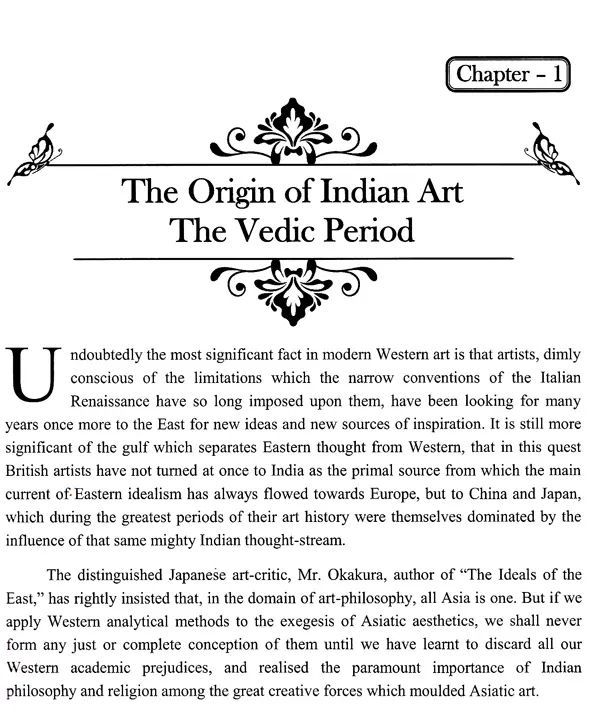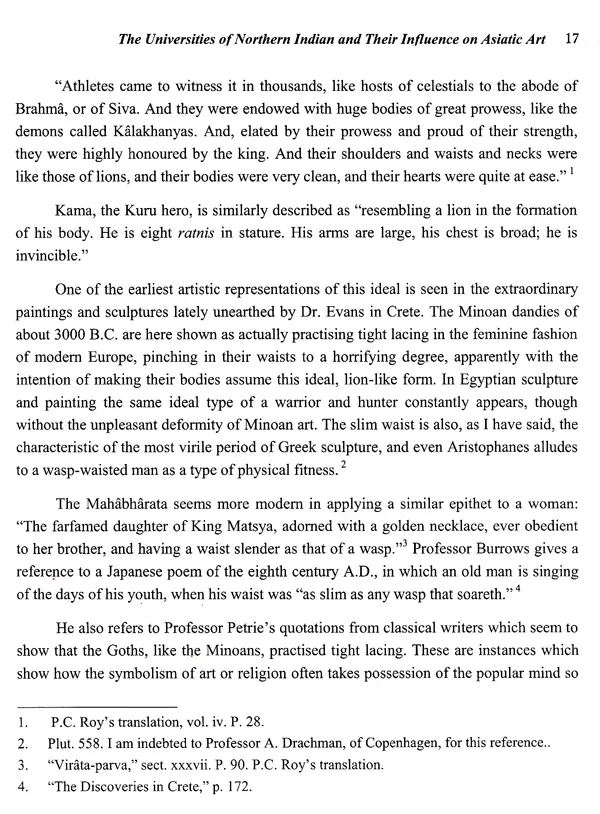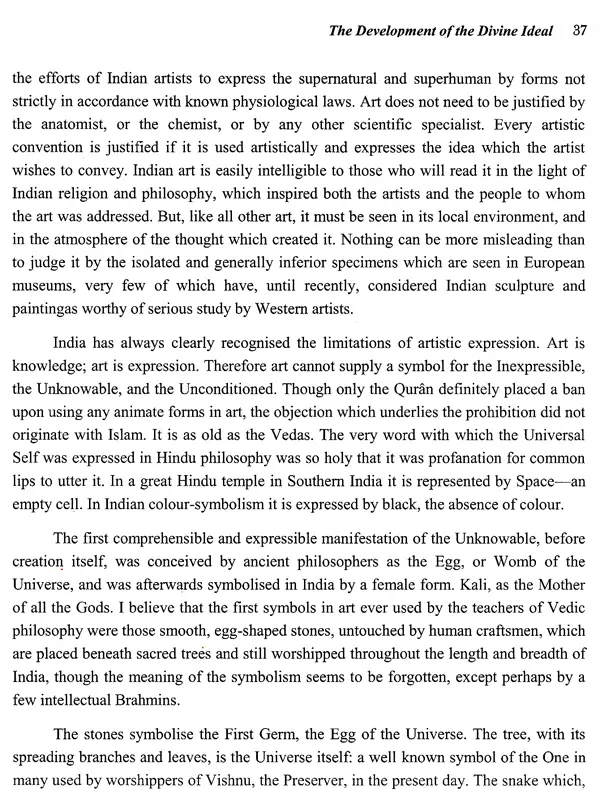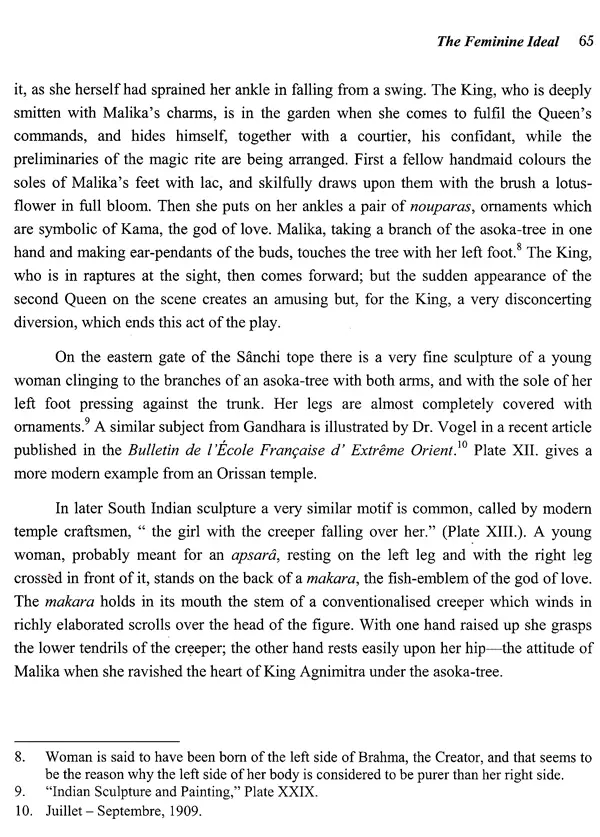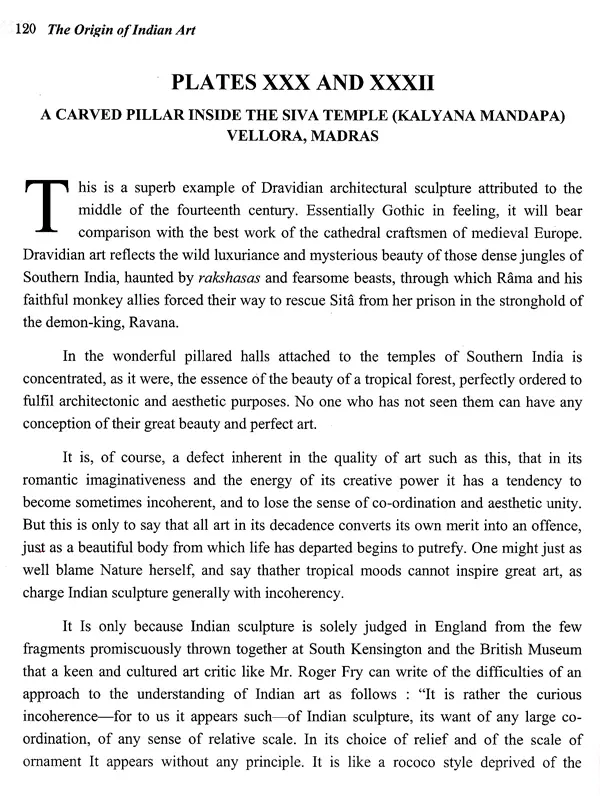
The Origin of Indian Art
Book Specification
| Item Code: | UAN027 |
| Author: | D. N. Tiwari |
| Publisher: | Prachya Vidya Bhawan, Varanasi |
| Language: | English |
| Edition: | 2018 |
| ISBN: | 9788193027585 |
| Pages: | 160 |
| Cover: | HARDCOVER |
| Other Details | 11.10 X 8.90 inch |
| Weight | 670 gm |
Book Description
Though in my excursions into the new world of art which India has revealed to me I have acquired an intense admiration for the great monuments of the past, my interest in Indian art is not of an academic or archaeological kind. It is centred in the fact that Indian art is still a living thing with vast potentialities, of such unique value to India and all the world that it should be regarded I as a great national trust which Great Britain is bound in honour and duty to guard and maintain. If to the orthodox critic my enthusiasm may seem to be excessive, I have the satisfaction of knowing that it is shared by a goodly company of my fellow artists; and the fault, if fault there be, is a venial one. Art does not die of overpraise; it cannot live or thrive in an atmosphere of contempt and depreciation. The half-hearted admirers of Indian art are those who do it most injury.
It would be regarded as silly and inconsequent if a critic were to complain of the sculptors of the Sphinx that they knew not how to draw or model cats and dogs. Western methods of art teaching in India, based on the assumption that Indian artists have been always ignorant of anatomy and perspective, are not less irrelevant and uninformed.
It would be regarded as silly and inconsequent if a critic were to complain of the sculptors of the Sphinx that they knew not how to draw or model cats and dogs. Western methods of art-teaching in India, based on the assumption that Indian artists have been always ignorant of anatomy and perspective, are not less irrelevant and uninformed.
The nation which governs India should not allow its state museums to lend themselves to the depreciation of Indian art in all its higher aspects. I am convinced that. with the spread of better knowledge, the hole consensus of artistic opinion in Europe. will condemn such statements as those which appear in the official handbook to the Indian section of the Victoria and Albert Museum; which reveal, also, the guiding principle in the whole past administration of it:
"The monstrous shapes of the Puranic deities are unsuitable for the higher forms of artistic representation; and this is possibly why sculpture and painting are unknown, as fine arts, in India. ... Nowhere does their figure-sculpture show the inspiration of true art. They seem to have'no feeling for it.... How completely their figure-sculpture fails in true art is seen at once when they attempt to produce it on a natural or heroic scale; and it is only because their ivory and stone figures of men and animals are on so minute a that they excite admiration"
It is easy to understand, when such ideas are given authoritative official sanction in the state collections which are designed for public enlightenment, why many sound English art-critics are full of similar prejudices, and why Indian art is generally better appreciated on the Continent than it is in this country, hope that the selection of some of the finest examples of Indian sculpture which I have made to illustrate this book, together with those given in the previous one on the same subject, will go far to correct the false impression of Indian art which all our national collections create, and indicate the direction in which the latter may be improved
**Contents and Sample Pages**
